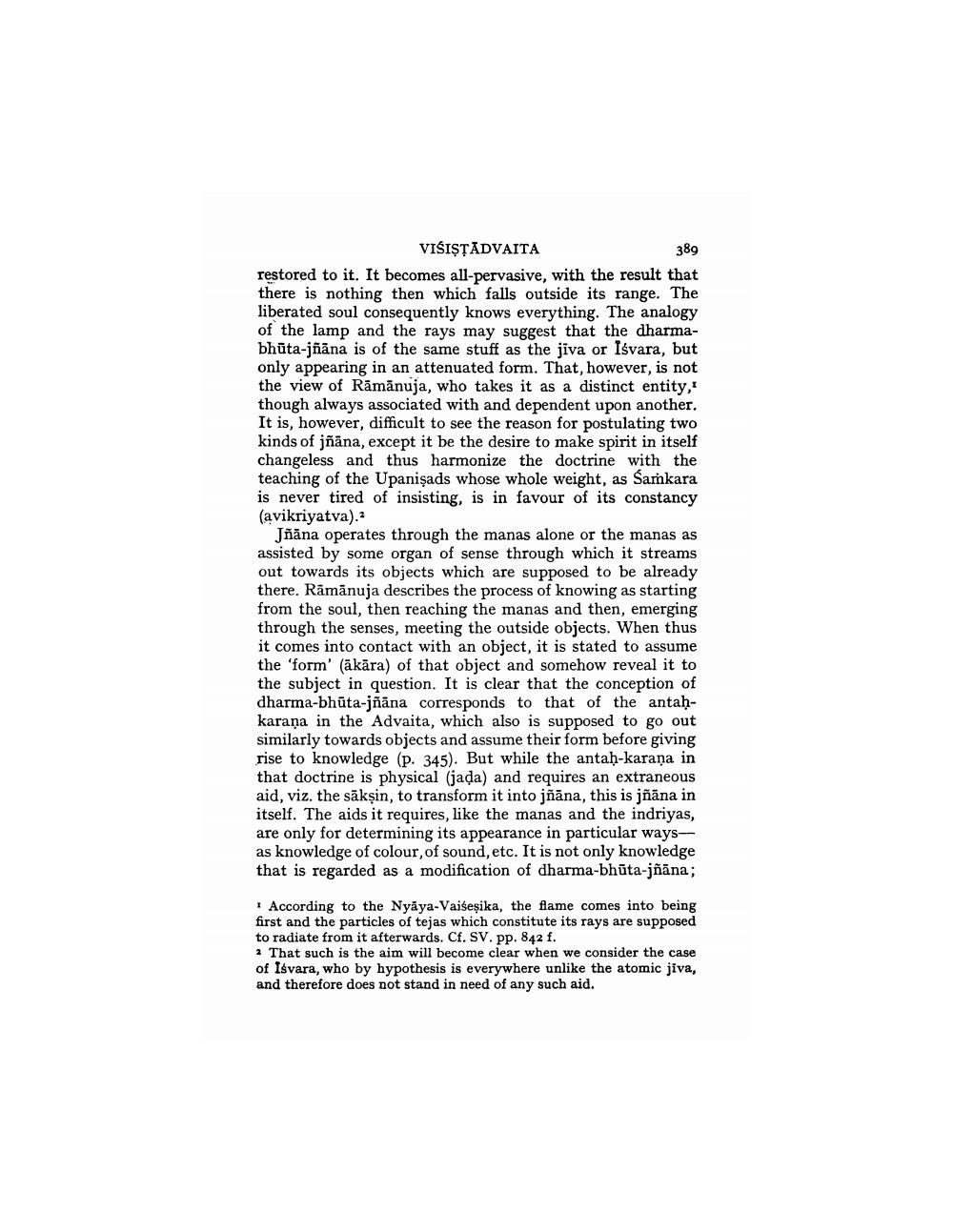________________
VISISṬADVAITA
389 restored to it. It becomes all-pervasive, with the result that there is nothing then which falls outside its range. The liberated soul consequently knows everything. The analogy of the lamp and the rays may suggest that the dharmabhūta-jñāna is of the same stuff as the jiva or Isvara, but only appearing in an attenuated form. That, however, is not the view of Rāmānuja, who takes it as a distinct entity,' though always associated with and dependent upon another. It is, however, difficult to see the reason for postulating two kinds of jñāna, except it be the desire to make spirit in itself changeless and thus harmonize the doctrine with the teaching of the Upanisads whose whole weight, as Śamkara is never tired of insisting, is in favour of its constancy (avikriyatva).2
Jñana operates through the manas alone or the manas as assisted by some organ of sense through which it streams out towards its objects which are supposed to be already there. Rāmānuja describes the process of knowing as starting from the soul, then reaching the manas and then, emerging through the senses, meeting the outside objects. When thus it comes into contact with an object, it is stated to assume the 'form' (ākāra) of that object and somehow reveal it to the subject in question. It is clear that the conception of dharma-bhūta-jñāna corresponds to that of the antaḥkarana in the Advaita, which also is supposed to go out similarly towards objects and assume their form before giving rise to knowledge (p. 345). But while the antaḥ-karana in that doctrine is physical (jaḍa) and requires an extraneous aid, viz. the sākṣin, to transform it into jñāna, this is jñāna in itself. The aids it requires, like the manas and the indriyas, are only for determining its appearance in particular waysas knowledge of colour, of sound, etc. It is not only knowledge that is regarded as a modification of dharma-bhūta-jñāna;
According to the Nyaya-Vaiseşika, the flame comes into being first and the particles of tejas which constitute its rays are supposed to radiate from it afterwards. Cf. SV. pp. 842 f.
2 That such is the aim will become clear when we consider the case of Isvara, who by hypothesis is everywhere unlike the atomic jiva, and therefore does not stand in need of any such aid.




